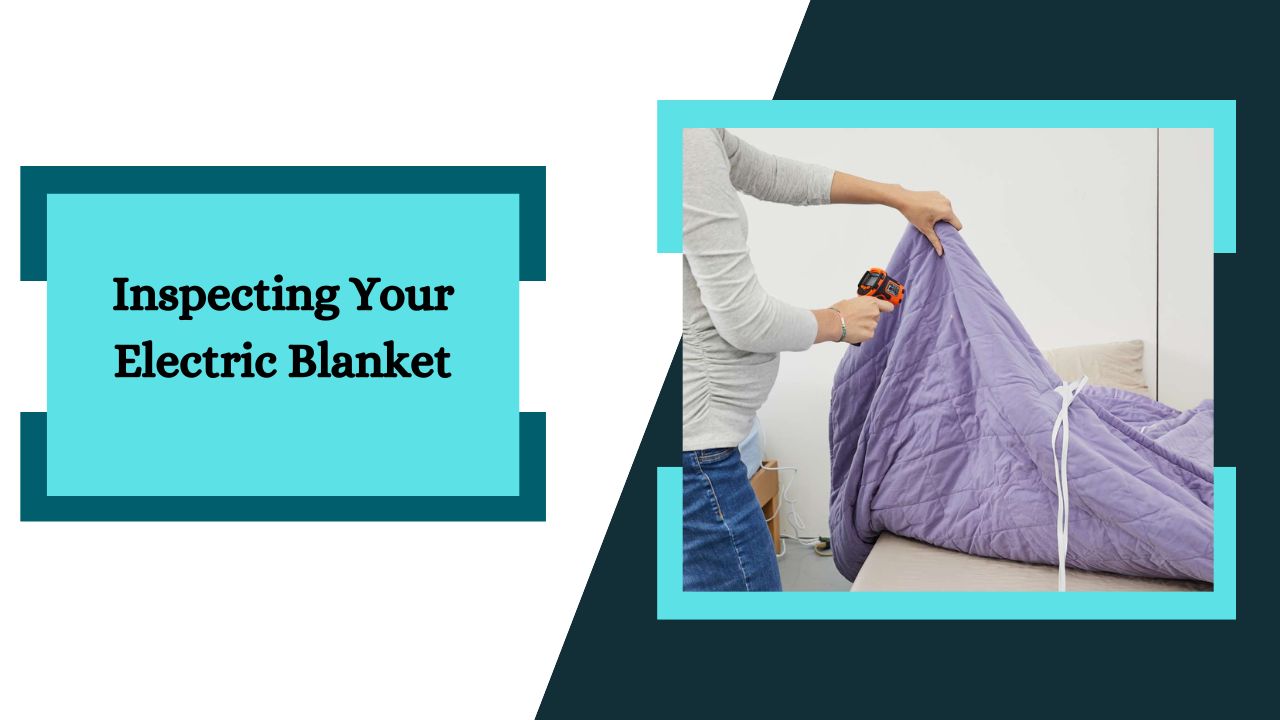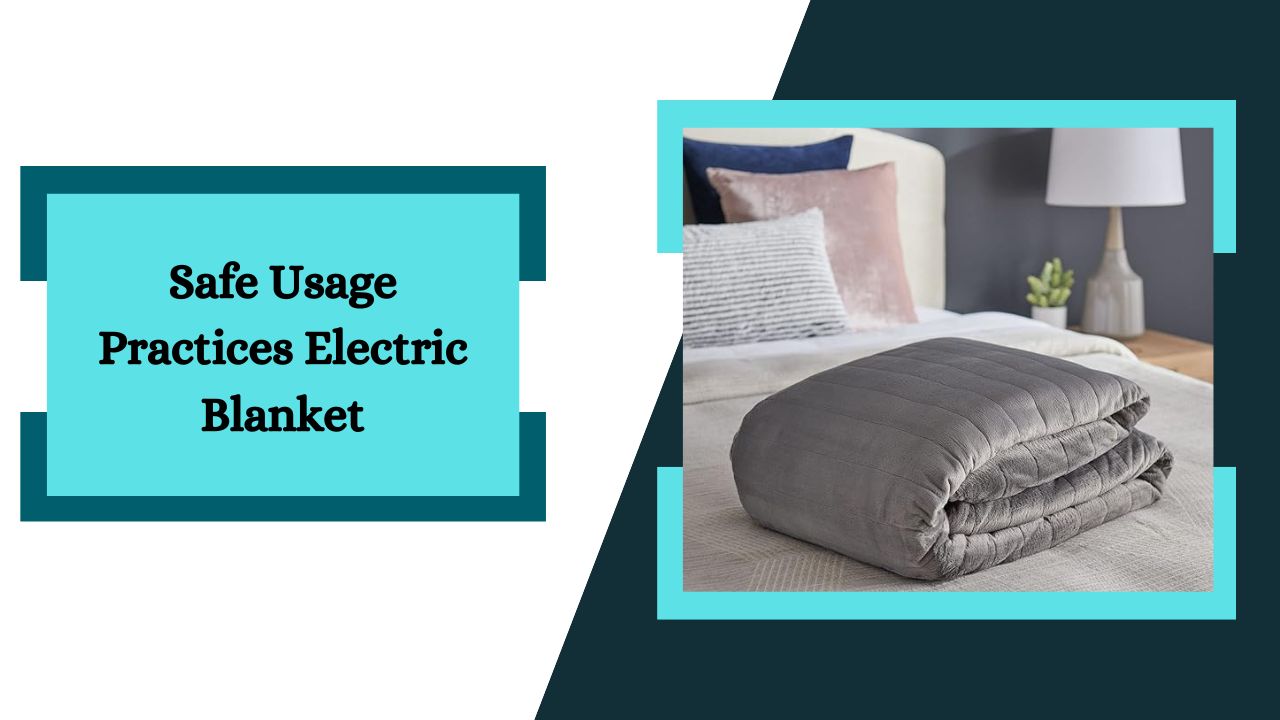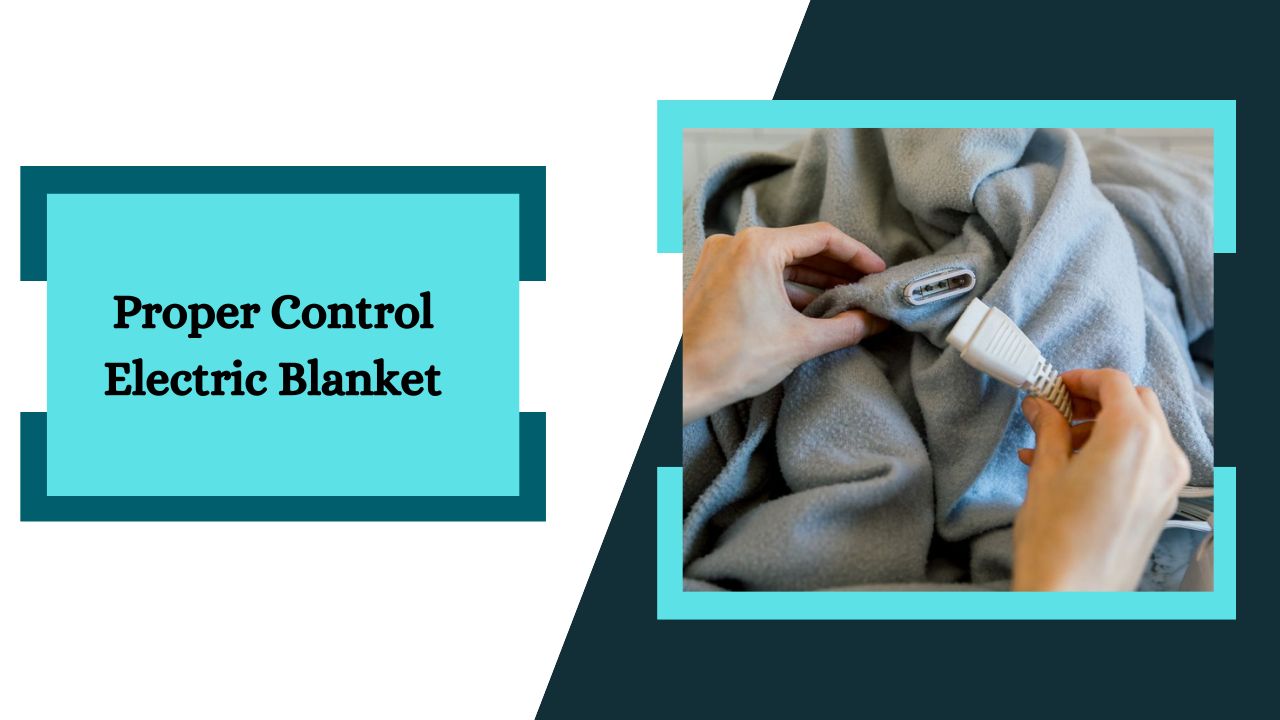As winter blankets the world in its frosty embrace, the appeal of electric blankets becomes undeniable. These cozy companions offer a reprieve from the biting cold, promising warmth and comfort during long, chilly nights. However, beneath their soft exterior lies a complex electrical system that demands our attention.
In this extensive exploration, we embark on a journey through the inner workings of electric blankets, unravelling their inner workings, deciphering safety codes, and equipping ourselves with the knowledge to revel in their warmth responsibly.
When selecting an electric blanket, choose one that has been tested and certified by a reputable safety organization. Look for labels indicating the blanket meets standards. Avoid using old, damaged, homemade, or uncertified electric blankets that may not meet key safety standards.
Select an electric blanket made from flame-resistant fabrics marked as meeting the CFR 1610 federal flammability standard. Choose a blanket with a low voltage of less than 300 volts for optimal safety. The size should fit your bed properly without hanging down excessively on the sides. Measure the length and width of your bed before purchasing a blanket to ensure a proper fit.
Inspecting Your Electric Blanket

Inspect your electric blanket thoroughly before each use. Examine both sides for damage, paying close attention to the following:
Wires: Look for exposed wires, broken insulation, dark spotting, fraying, brittleness, cracking, or crimping. Wires should lie flat and straight without kinks or coils.
Connectors: Inspect where the power cords meet the wiring within the blanket. Check for broken or loose connections. Connectors should be intact and snug.
Fabric: Check for rips, tears, or thin spots that could expose wires. Fabric should be free of burns or scorch marks which can indicate overheating risks.
Controls: Make sure control dials, buttons, and panels are functioning properly without exposed wiring or cracking.
Heat Distribution: Turn the blanket on briefly to a low setting and feel for uneven heat distribution or overly hot spots indicating internal damage.
At the first sign of any wear including exposed fillings, discontinue use immediately and replace the electric blanket. Do not use damaged blankets due to serious fire, shock, and burn hazards.
Safe Usage Practices Electric Blanket

Follow these safe usage tips when using your electric blanket:
- Never leave an electric blanket turned on unattended or while sleeping. Turn it on 30 minutes before bed to pre-warm the bed, then switch it off before getting under the covers.
- Do not tuck the electric blanket tightly under the mattress. Allow it to lie flat and loose to prevent overheating.
- Never fold or bunch an electric blanket when in use. The bunched areas can overheat quickly.
- Don’t allow pillows, comforters, or other flammable fabrics to rest directly on top of a heated electric blanket.
- Shut off the blanket controls before unplugging from the outlet. Unplugging before turning off can cause sparks.
- Keep electric blankets completely dry. Never submerge in water or machine wash according to manufacturers' instructions.
- Don’t use extension cords or power strips with electric blankets. Plug directly into a wall outlet to prevent overloading the electrical system.
- Make sure pets or children don’t sleep directly on top of the blanket which can lead to overheating or damage from scratching.
- Avoid using electric blankets on memory foam or other heat-sensitive mattresses which can break down over time.
- Do not exceed the manufacturer's recommended usage limits per season. Overuse adds strain over time.
- Test auto shut-off features regularly by verifying the blanket turns off as expected after the auto shut-off timeframe (typically 10 hours).
Proper Control Settings Guidelines For Optimal Electric Blanket Safety

Use the following control setting guidelines for optimal electric blanket safety:
Preheating: Turn to the highest setting when first getting into bed to quickly preheat your bed for 20-30 minutes.
Nighttime Use: Lower the setting to the lowest heat level once preheated to prevent overheating while sleeping.
Sensitive Skin: Those with sensitivity to heat or skin conditions should use the lowest setting only, even when preheating.
Pets/Kids: Households with kids or pets should maintain electric blankets at the lowest temperatures to prevent contact burns.
Unattended: When leaving an electric blanket unattended, turn it off completely. Never leave it running at any heat level when not occupied.
By following the proper preheating and nighttime use settings, you can reduce the fire risks associated with overheating electric blankets while sleeping.
Proper Maintenance Of Electric Blankets
Follow these tips to properly maintain your electric blanket:
- Avoid washing electric blankets in home machines. Strictly follow the manufacturer's care instructions to prevent damage from excess moisture.
- Thoroughly air dry electric blankets if machine washing is required and permitted by the manufacturer. Check for dampness before reusing to prevent electric shocks.
- Fold gently without tight creases when storing between uses to prevent damage to wires inside. Do not tightly roll or bundle for storage.
- Do not place heavy storage boxes or other items on top of stored electric blankets to prevent wire damage.
- Consider using an electric blanket storage bag for safekeeping between uses.
- Unplug from the power source when not in use for extended periods.
- Check your electric blanket frequently for wear and damage, especially if using one that is over 5 years old.
- Replace electric blankets that are more than 10 years old or show any signs of damage, even minor fraying.
By properly storing, maintaining, and replacing aging electric blankets, you can prolong their safe usage. But remember, no electric blanket will last forever. Replace old blankets that show any deterioration.
If concerned about electric blanket safety, consider switching to alternative warming devices such as:
Heating pads: Can be used to preheat beds before switching them off at night. Avoid sleeping directly on top.
Hot water bottles: Seal hot water securely in a bottle and wrap it in a towel to safely add heat and weight to your bed.
Bed warmers: Microwavable pads, pillows, or mattress covers can be quickly heated and then placed under sheets.
Wool blankets: Provide natural warmth without electric coils. Can be layered for desired warmth.
Flannel sheets: Trap body heat more effectively than cotton sheets for added warmth.
While not as conveniently automatic, these electric-free alternatives avoid some risks of electric blankets while still keeping your bed cozy on cold nights.
Who Should Avoid Electric Blankets?
Certain individuals should exercise extreme caution or avoid electric blankets altogether, including:
Young children: More at risk for burns and inability to report discomfort or damage to blankets.
Elderly: May have decreased sensitivity to heat and less ability to quickly remove themselves from an overheated blanket.
Those with disabilities: May not be able to quickly react to remove blankets if they overheat or catch fire.
Diabetics and those with circulation issues are more prone to burns and skin damage from excess heat.
Memory foam mattress owners - Memory foam can break down faster under sustained heat.
Pets that sleep in bed - At risk for burns from contact with hot blankets.
For these groups, it is safest to rely on alternative warming devices that don't carry electric shock or fire risks.
Warning Signs of Unsafe Electric Blankets
Discontinue using any electric blanket that shows these warning signs:
- Visible scorch marks or burning smells indicating overheating
- Exposed wiring or connectors between the control unit and blanket
- Damaged fabric including tearing, ripping, or thin worn spots
- Uneven heat distribution with overly hot areas when switched on
- Sparking from plugs or controls when connected/disconnected
- Failure of the auto shut-off feature to work properly
- The electric blanket feels excessively heavy, which can signal moisture retention issues
An electric blanket with any of these defects poses substantial safety hazards and should be permanently retired. Do not take risks trying to repair electric blankets at home.
Can I leave my electric blanket on overnight?
While many modern electric blankets come with automatic shut-off features for added safety, it is generally recommended to turn off your electric blanket when not in use or before falling asleep. This practice not only conserves energy but also minimizes the risk of overheating and potential safety concerns.
How do I know if my electric blanket is malfunctioning?
Signs of a malfunctioning electric blanket may include frayed wires, exposed heating elements, or an unusual burning smell. If you notice any of these issues, immediately discontinue use and seek professional assistance. Regularly inspecting your electric blanket for signs of wear and tear can help catch potential problems early.
Are electric blankets safe for children?
Electric blankets can be used for children, but it's essential to exercise caution. Monitor the temperature settings, avoid high heat levels, and ensure the blanket is in good condition without any visible damage. Always follow the manufacturer's guidelines for child usage and safety.
Can I wash my electric blanket in a washing machine?
In most cases, electric blankets are machine washable, but it's crucial to detach the power cord and controller before washing. Follow the manufacturer's washing and cleaning instructions carefully to avoid damage to the electrical components. Always allow the blanket to dry completely before reconnecting the power source.
How long do electric blankets typically last?
The lifespan of an electric blanket varies depending on factors such as usage, care, and quality. On average, a well-maintained electric blanket can last for up to seven years. Regularly inspecting and following care guidelines can contribute to extending its longevity.
Is it safe to use an electric blanket during pregnancy?
Pregnant individuals should consult their healthcare provider before using an electric blanket. While many find them safe, it's essential to consider individual circumstances. The temperature setting should be moderate, and any signs of discomfort or overheating should prompt discontinuation of use.
What should I do if my electric blanket is not heating evenly?
Uneven heating may occur due to wrinkles or folds in the blanket. Adjust the positioning to ensure a smooth surface. If the issue persists, check for any visible signs of damage, and if necessary, consult the manufacturer's troubleshooting guide or customer support for assistance.
Can I use my electric blanket with other bedding, like a duvet or comforter?
Yes, using additional bedding, such as a duvet or comforter, can provide insulation and allow you to lower the electric blanket's temperature while still staying warm. However, avoid excessive layers that may trap heat, and always follow the manufacturer's recommendations for safe usage with additional bedding.
Electric blankets provide cozy warmth during colder months but need proper precautions to be used safely. Examine blankets before each use and discontinue damaged blankets immediately. Follow all manufacturer guidelines and don't exceed recommended usage limits. Consider alternatives for those especially vulnerable to electric blanket risks. With smart safety practices, you can stay cozy and avoid fires, shocks, and burns from your electric blankets this winter.









